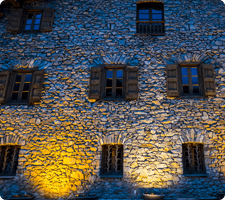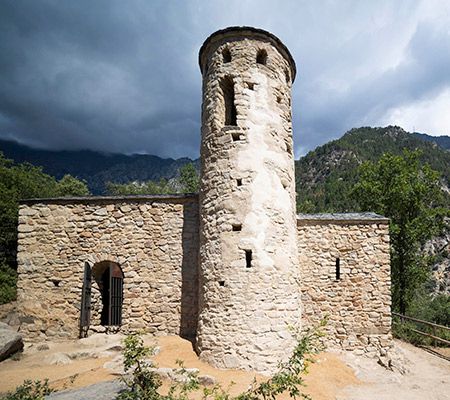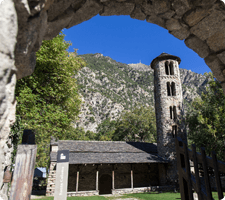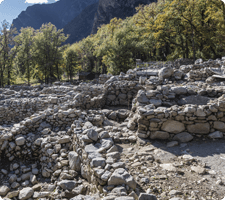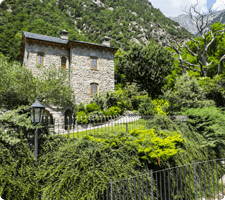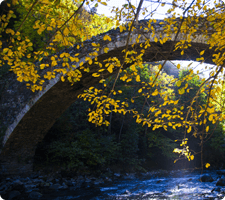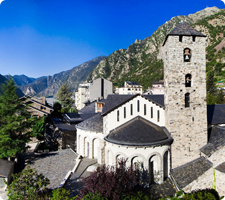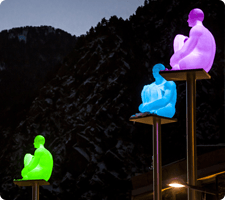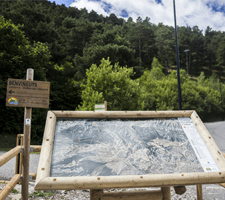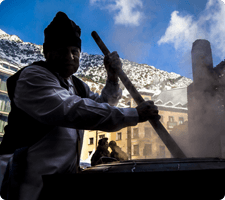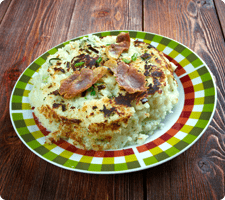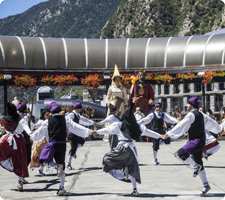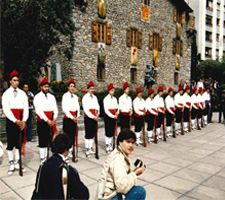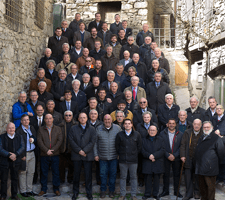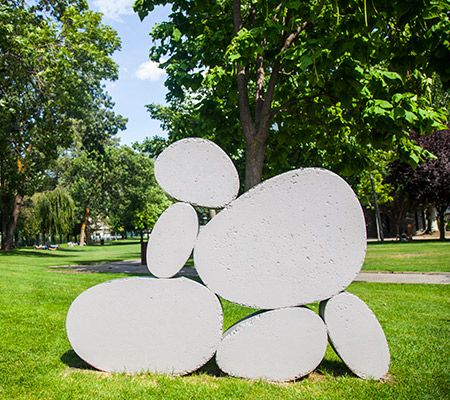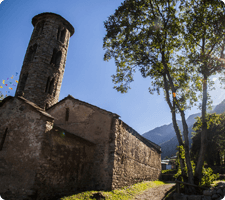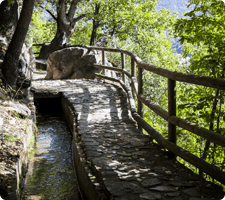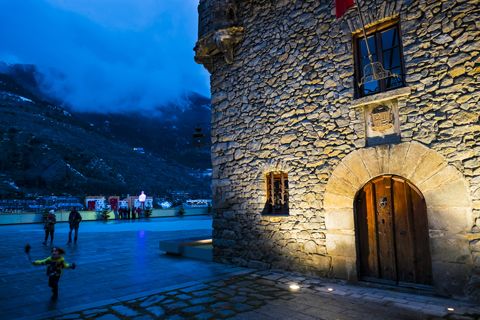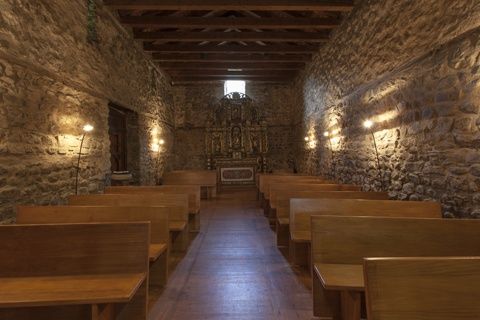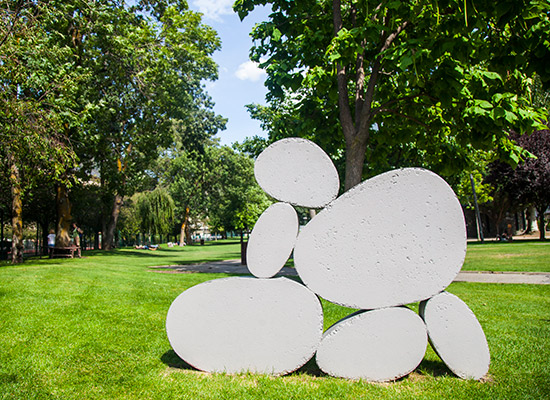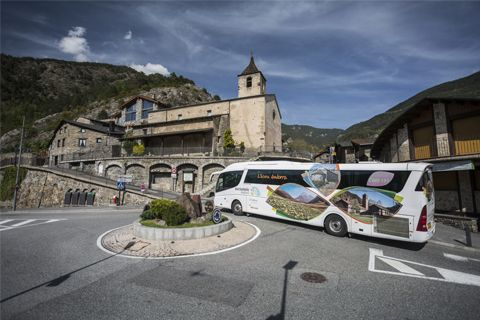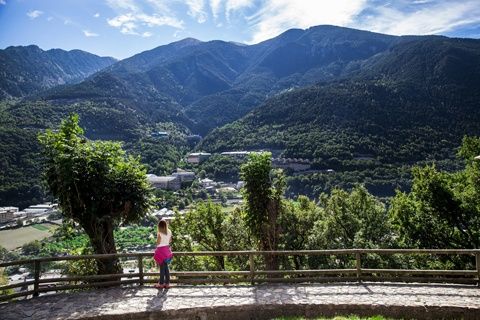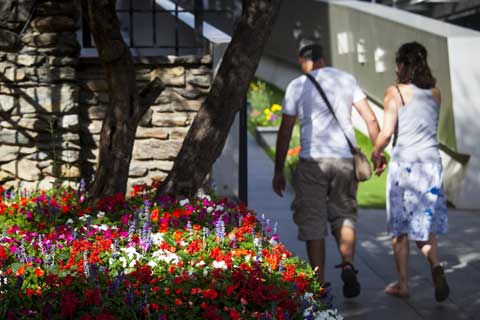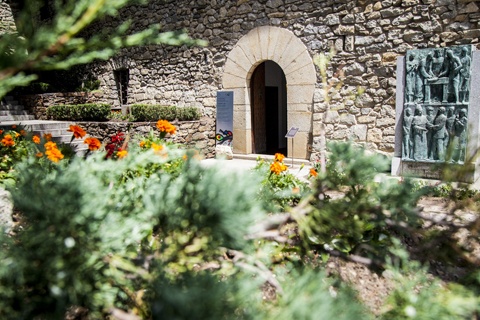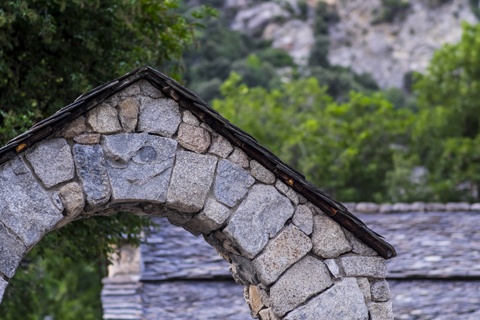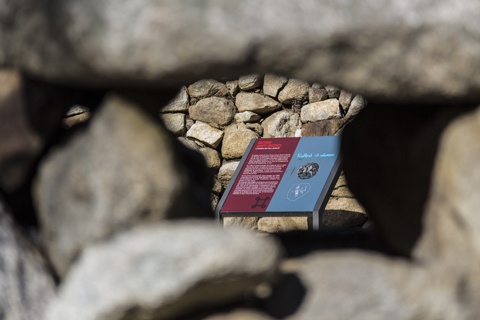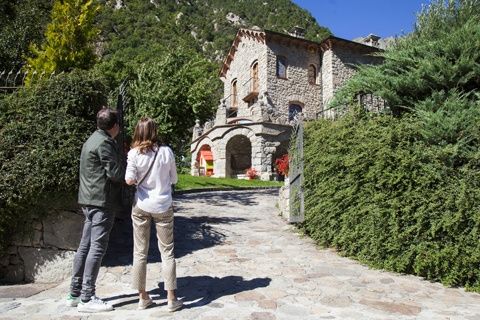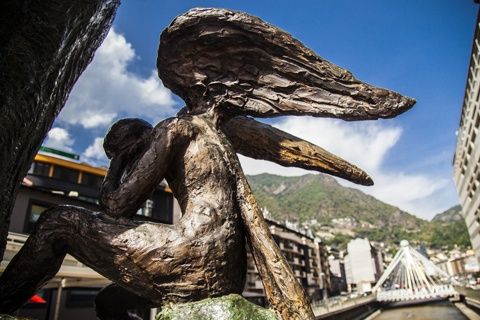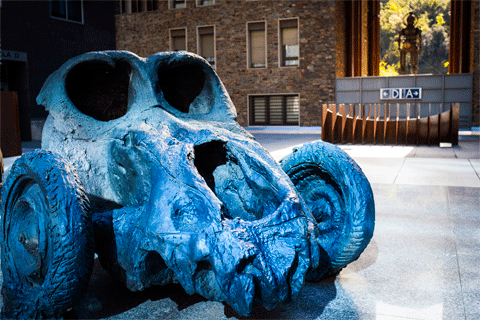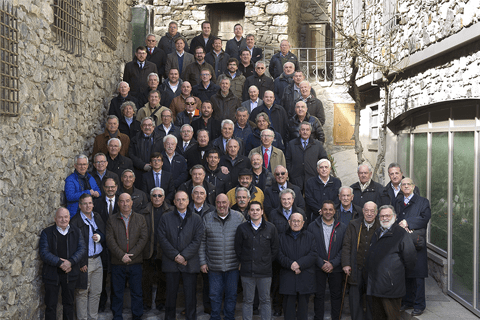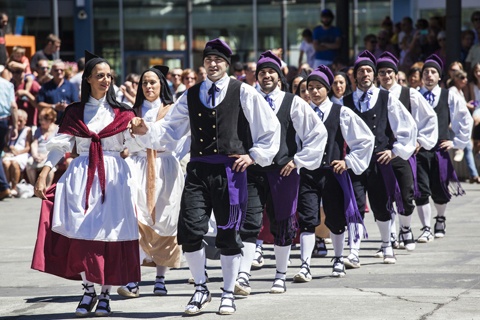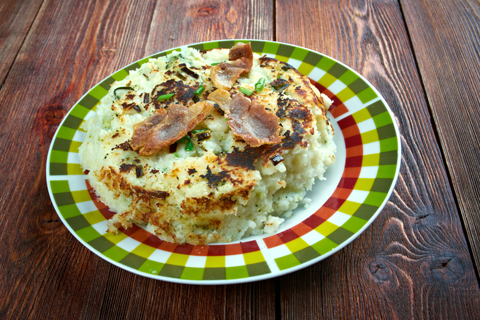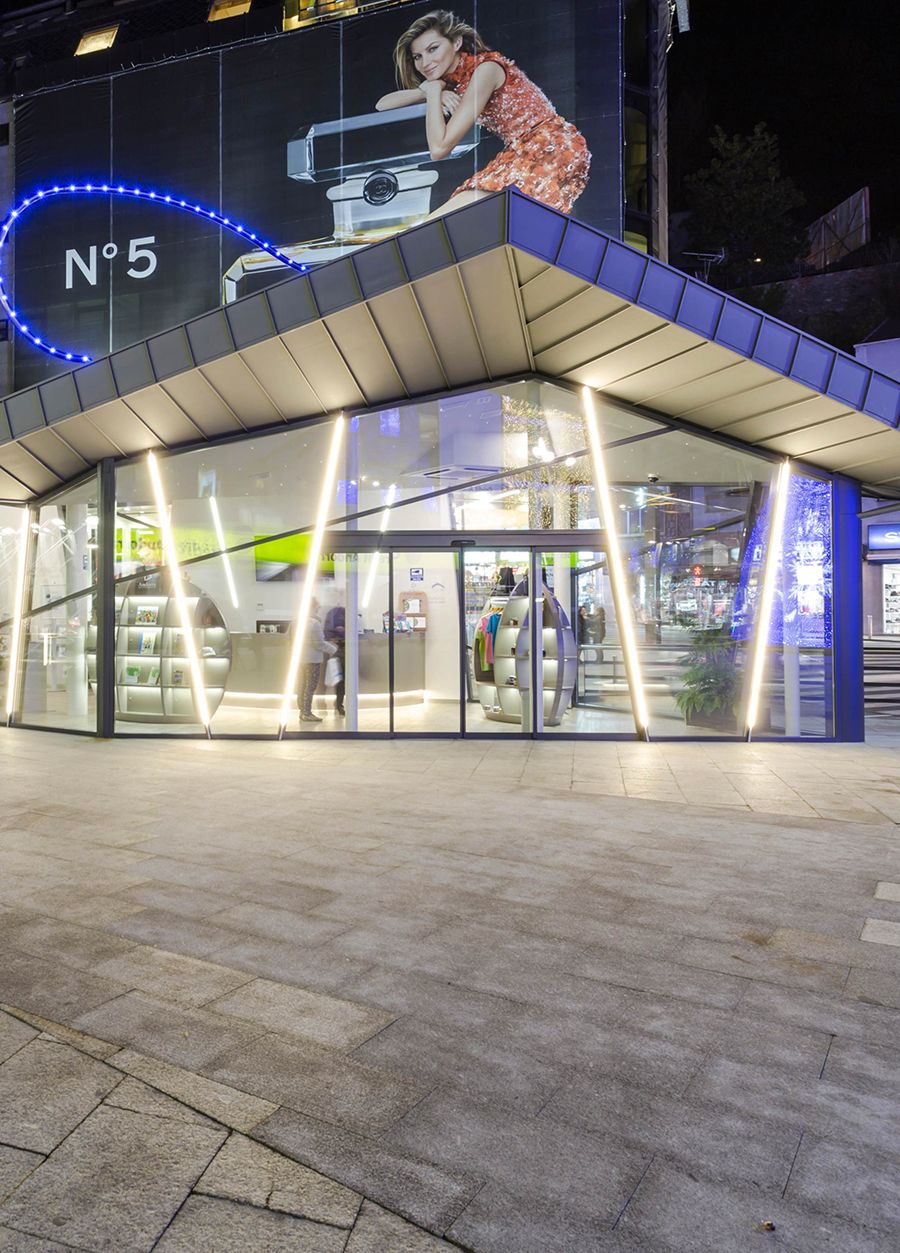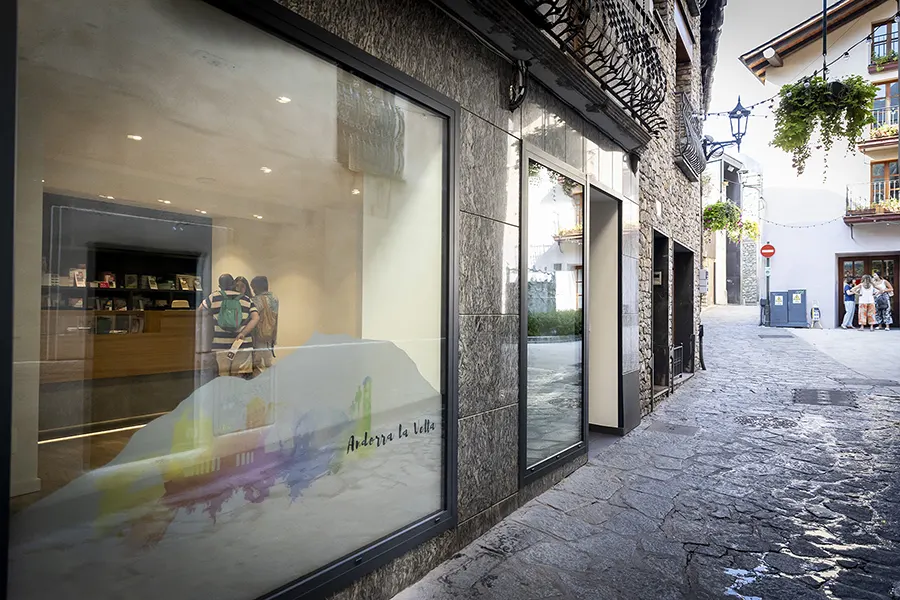Andorra la Vella has, among its artistic heritage, numerous contemporary sculptures located in different parts of the parish.
More information, Tourist Office
The exhibition halls and art galleries are the protagonists of one of the most active facets of the cultural life of the Principality.
La Llacuna Cultural Centre is a space where all kinds of exhibitions are also programmed.
Andorran cuisine has plenty to offer, and is closely linked with its inhabitants' way of life up to the start of the 20th century.
As Andorran society was mainly built around animal husbandry, one of the staples was milk and its derivatives, including cheese of many varieties, such as tupí, which is still made in the region. And, even though most homes had hens and rabbits, the most popular meat was pork. The pork slaughter, normally in December, brings with it a wide range of cold meats, such as donja, bringuera, bulls, llonganissa and botifarra, as well as confit or salted meat.
Game has also always been popular. Jugged wild boar, izard and hare, stewed with wine and chocolate, and squirrel with rice are the most well-known dishes. As for fish, there is the Andorran-style river trout, which is prepared with almonds.
However, one of the Principality's most typical dishes is made with vegetables. Trinxat is made with cabbage, potatoes and bits of bacon or salted herring, in a shape similar to a small Spanish omelette. It is normally eaten in the winter. The main ingredient, cabbage, is also used in another typical dish: escudella. Andorran forests and meadows also offer a wide variety of mushrooms, which make a great side dish.
Many other simple yet tasty dishes could be listed here: coca (a kind of flatbread), chicory or watercress salad, snails, cod... Come and try Andorran cuisine!
 Comú
Comú
 Tràmits
Tràmits
 Esports
Esports
 Turisme
Turisme
 Cultura
Cultura

 CA
CA  ES
ES  FR
FR 

